Insects at Home: Some Devour Food, Others Ruin Health
What do you do when a moth takes up residence in a bag of flour or when an uninvited guest chews a hole in your favorite pair of wool socks? Certain insects pose no health risk to humans, but others do.

At some point in their lives, almost everyone has had a moth take up residence in a bag of flour or an uninvited and hard-to-see house guest chew a hole in their favorite woolen socks. Some pests don't hurt people, but others can hurt your health and should be taken care of properly.
The most common bugs in people's homes are moths, cockroaches, ticks, and even silverfish, which aren't talked about very often. Most of the time, it is the insects' larvae, not the adults, that do the most damage to food and clothing. Caterpillars like to eat rice and buckwheat. Butterflies just fly around looking for new places to lay their eggs and produce offspring.
When it comes to moths, these caterpillars are also the ones that nibble. Caterpillars also make the things we see, like the webs we often find between the folds of our clothes. They fix themselves in place so that they do not fall out accidentally. Indoors, the warm-blooded usually take up residence. So the warmer the house, the faster these insects breed.
Many tiny creatures fly into the house through a window and then look for the warmest and best place to produce offspring. The time it takes for these small, sometimes very gross creatures to grow up is pretty quick. For example, from the moment a butterfly flies into our home and lays its eggs, it can take as little as one month for the next generation of insects to emerge.
Insects that are not harmful to health
Food cricket
A single female can lay anywhere from a few dozen to over a hundred eggs, depending on the species. Most people complain about so-called food moths, but they are not moths at all; they should be called food crickets. This butterfly is not related to moths. It is a butterfly of the cricket family. The food butterfly burrows into our food and lives there. If we allow it to establish itself, it can breed a lot in a short time.
Food crickets can enter our homes through more than just an open window. People often bring them from the grocery store with the cereals they buy there. It's hard to prove when and how, but a person brings rice or cereals from the store, puts them in an airtight glass container, seals it shut, and puts it on a shelf. Then three months go by, the person looks, and there in the glass jar are the larvae.
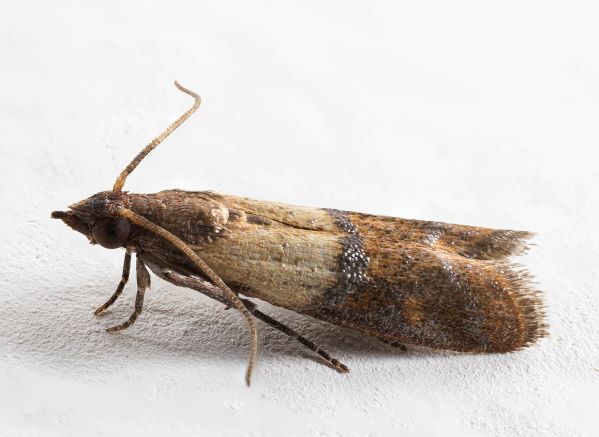
The most popular and easiest solution in such a situation is to throw away all your cereal stocks. Another, less drastic option is to put the affected products in the freezer for a few days. Because these eggs and butterflies, even if there are caterpillars, cannot survive the freezing temperatures and will freeze. Then we can put them on a shelf, theoretically in an airtight container, and then there should be no chance of them breeding inside.
It is not only food that is susceptible to contamination by crickets. They like warm, dark, and dry places—kitchen cupboard shelves, a corner near the cooker, etc. The caterpillars can crawl quite a distance from a kitchen shelf, so the whole kitchen should be checked and the areas infested with the cricket thoroughly cleaned. They can be washed with vinegar and water for extra safety.
Fruit flies
Another common household nuisance is the so-called fruit fly. These are also particularly active in warm weather.
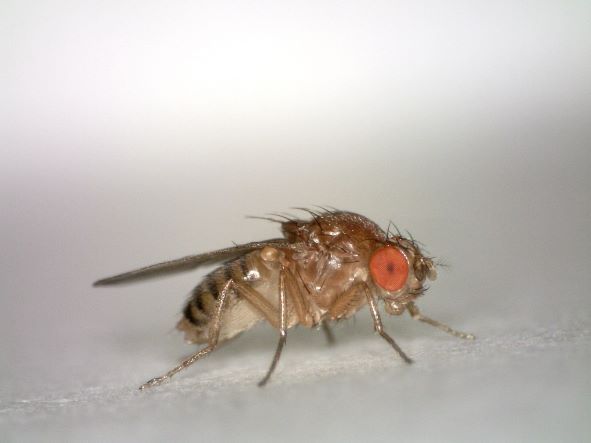
Fruit flies, or Drosophila, are also highly common insects. especially in the season when we have fruit at home. While the food cricket prefers a warm, dry environment, the fruit fly prefers a warm, humid environment. This is why they can also take up residence in flower pots, compost waste, and the kitchen sink.
In case of a fly infestation, it is advisable to wash dishes regularly. Kitchen surfaces can also be washed with alcohol, as fruit flies do not like its strong aroma.
Fruit flies themselves disappear at the first cold. But when Drosophila has infested almost the whole kitchen, the first step is to destroy their breeding sites: The already ripe, sour fruit is one thing, but also the sink drains, where there is constant moisture, where organic putrefactive substances form, some kind of fermentation process, and also those places, of course, and the trash cans.
Common clothes moths
Another rather annoying and barely noticeable neighbor in our homes are moths, whose larvae chew mostly natural fiber clothing, such as wool and cotton, and less often synthetics. To avoid them, clothes in the wardrobe should be moved and washed regularly. It is also essential to keep a strong-smelling soap or fragrance in the wardrobe.
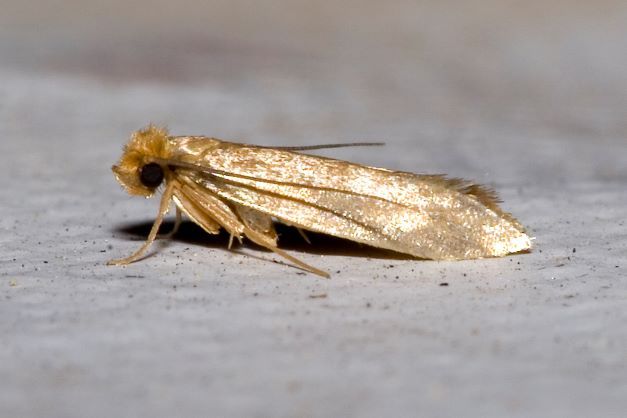
Communication with each other through pheromones and scents is also very important for insects, especially moths. For example, a moth flies to a cupboard, smells it, realizes there is no moth in it and flies onto another cupboard. Other times it might be that the female sits, releases these pheromones, and the male flies in; they mate and go on to lay new eggs. It's a kind of chemical camouflage. The moth flies away, says "There's nothing here," and flies on.
Silverfish
The silverfish, a very small, slender insect, is common in people's homes. Sometimes we go into the toilet, turn on the light, and they peep through the cracks somewhere.
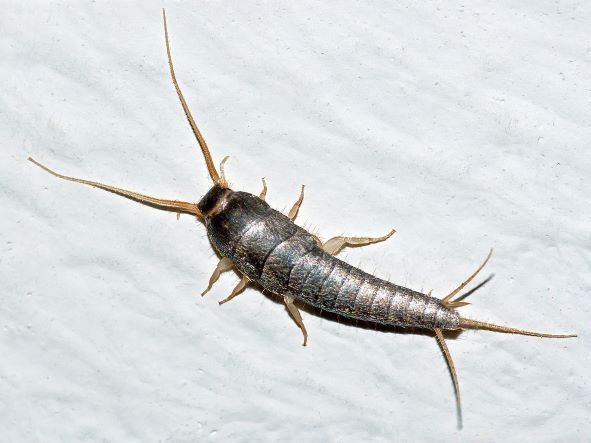
They feed on some of your old bits of skin. They are very small and completely harmless. No need to worry. Everybody can live with them. People ask: "I saw one; what do I do now?" Well, do nothing. It's all right.
Insects that can harm your health
All the insects mentioned above are not dangerous to humans. The only damage they cause is to foodstuffs, clothes, and shoes. However, some insects bite people, and their presence can cause various allergic reactions.
Most people can live with various insects, but in rare cases, they can be harmful to their health. Wherever there is a human being, there are always lots of them—hundreds, thousands, even millions of little bugs that we can only see under a microscope. They cause allergic reactions in a small percentage of people, which may not be that small; it is about 5–8%.
Cockroaches
The cockroach, which is more common in apartment buildings, can cause allergies. The heat is present all year in apartment buildings because of all the ventilation shafts. Because a kitchen cockroach is a cockroach that won't live in the wild, it can't hibernate. It needs warmth.
Cockroaches are said to possibly be the only creatures that can survive a nuclear war. There is some truth to this—they are certainly the hardiest insects and can survive for months without food. In the apartment, they hide in dark, dry places and feed on food crumbs. Interestingly, these insects do not lay eggs; the females carry them on their backs in an ootheca or egg sac.
You should not live with these mustachioed insects, as cockroaches can cause allergies.
It is the cockroach bodies that cause the allergic reaction. They decompose, freeze, and float in the air. In the air that we breathe in That's how they get onto our mucous membranes. For a sensitive person, cockroaches can cause a variety of unpleasant sensations: sneezing, coughing, and watery eyes.
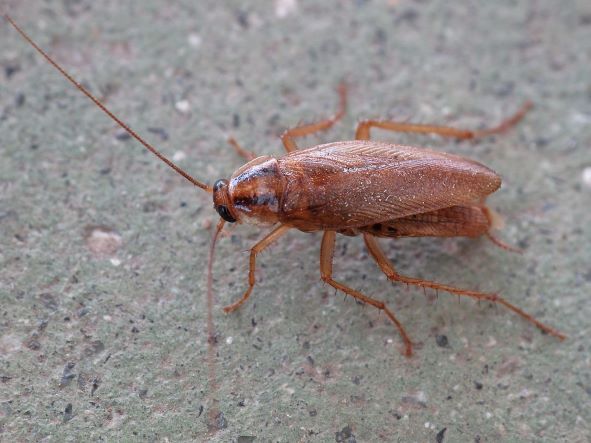
Of course, as long as the cockroach is whole, the allergic person has no problem, but some particles remain. The legs die off, and then they break down and fly into the air, and then they cause problems. The only way to fight these hardy insects is to buy traps and cockroach poison in the shops.
These bugs also don't like strong smells like catnip and ammonia. This is why experts sometimes suggest washing the floors of cockroach-infested homes with a mixture of rubbing alcohol and water. Catnip is another good way to get rid of cockroaches.
True bugs and fleas
Other insects, such as bloodsuckers like fleas and true bugs, can also be harmful to humans. Their bite is not poisonous, but it itches, causes discomfort, and can trigger an allergic reaction. For example, children who are bitten by these insects start to scratch and can't stop, but often the scratching is done with dirty hands, which leads to pus and other problems.
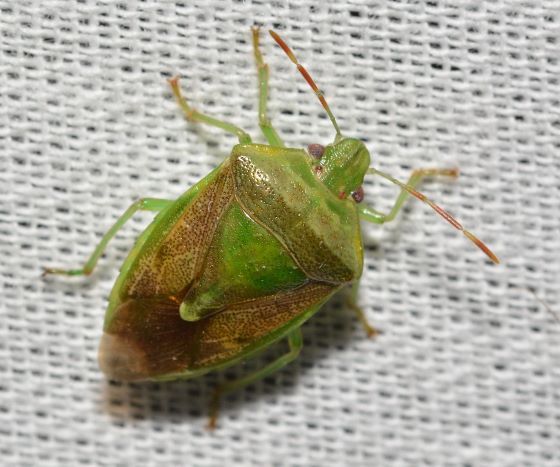
These insects can also only be driven out of your home by chemical means. And bed bugs will be particularly difficult to deal with, as they will need to be exterminated by professionals. We might throw away the bed and the mattress, which might not even be the most drastic way of dealing with them. They may also have crawled somewhere behind skirting boards, behind paintings, or behind wallpaper, where we do not notice them.
House dust mites
Dust mites are a common and unpleasant house pest, so tiny that they cannot be seen with the naked eye. These tiny creatures usually breed and live on almost all upholstered furniture. Those small, tiny house dust mites that live in huge numbers on all upholstered chairs, sofas, and mattresses—feed on our peeling skin. So wherever there is a person, there are always lots of them—hundreds, thousands, even millions of little insects that we only see under a microscope.
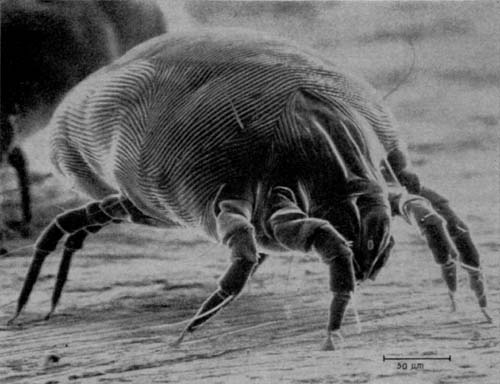
Dust mites dislike warm, dry rooms and especially high heat. That's why it's a good idea to clean furniture, mattresses, and bed linen thoroughly and regularly. Bed linens should be washed at least at 60 degrees and above. It should be washed regularly. If there are any couches or soft cushions, they can be taken outside to air out overnight.
In summer, they can be put out in the sun - dust mites die. Make sure there is no excess humidity indoors, as damp, cool rooms are what dust mites like. That's why you should always open the window when you wake up in the morning, and air out the room for at least 15 minutes, so that the moisture you breathe in during the night goes out, so there's no excess moisture. Also, ventilate the room several times during the day.




